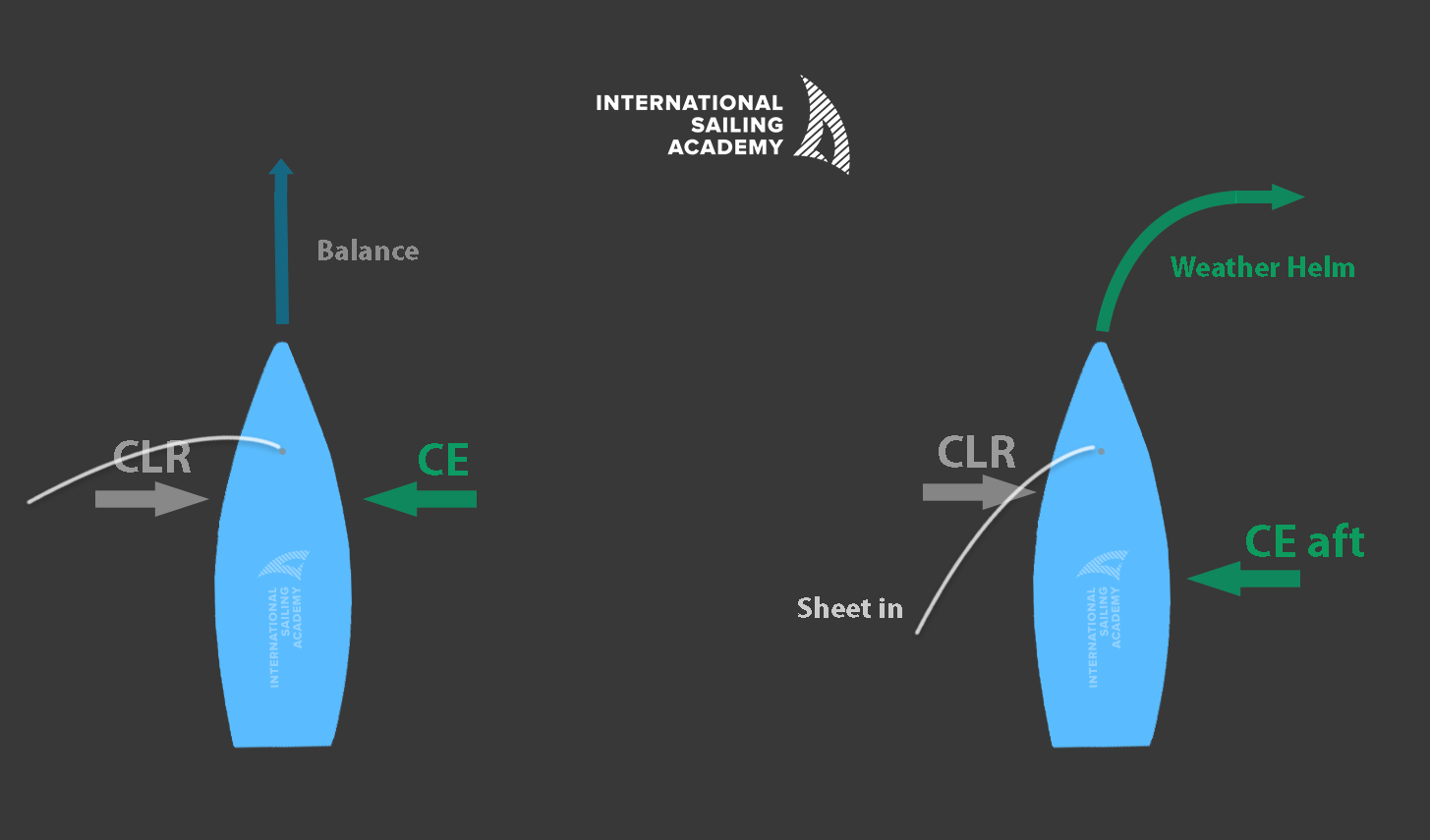
“Tillerman” will hate love the sailing drill for downwind technique.
Apart from joining our Downwind Clinic where we coach you for 6 consecutive days downwind, covering over 15 miles per day, there are some great drills you can learn sailing on your own.
A powerful example is tillerless sailing. It’s impressive how much one drill can reveal about a sailor's downwind technique, even at Olympic levels. This drill highlights rudder errors, sheeting mistakes and body position errors rapidly. It also provides a different, and great, sense of feel and connection with the boat. We recommend it for coaches as well.
1. Start in a light breeze, 4-7 knots
2. Setup by the lee with the boat balanced, and the tiller feeling very light, no helm
3. Let go of the tiller extension and let it sit on the leeward deck
4. Control the boat directionality using body weight, body position and sheet tension
5. After feeling control of directionality, work on your upturns, downturns, slow presses, even windward and leeward mark roundings, all without using your tiller
For theoretical background on how to control your boat without using your tiller, read on below.
When sailing deeper angles downwind, the moving forces on the boat are manipulated best in a more lateral fashion. Instead of directional changes or helm occurring primarily from the separation of CE and CLR fore and aft, there's more emphasis on their relationship laterally. IE, the forces moving further apart from each other in an outboard direction create turning force (helm) in the boat.
The downwind technique is to control these lateral forces with the heel of the boat. Press weight to leeward to head up. Heel the boat to windward to bear away. This manipulates lateral separation of the two forces.
Note: We always use the term leeward to represent the same side that the sail resides on
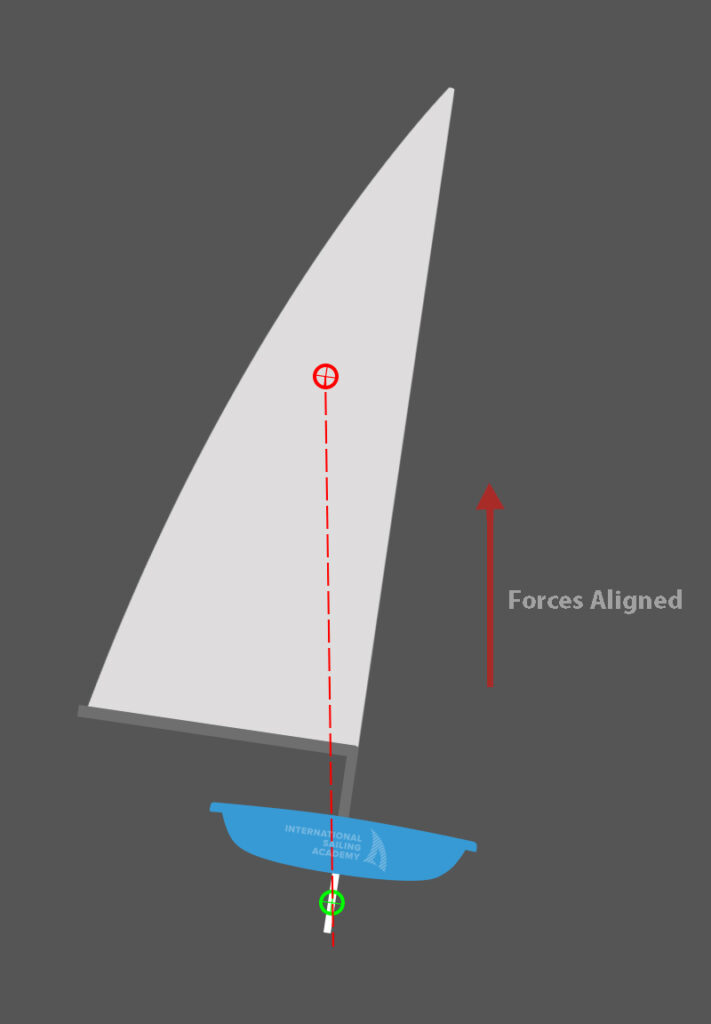
Laterally, forces are aligned and boat tracks straight.
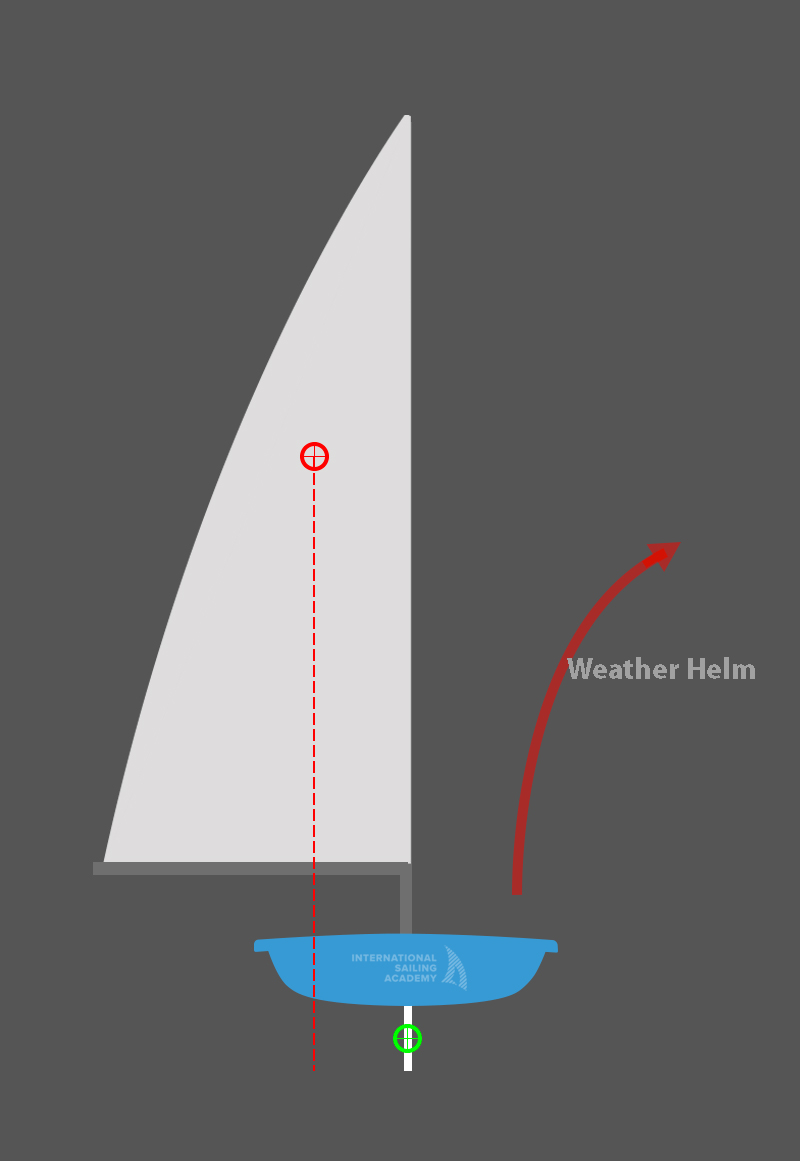
Boat is pressed flat (or passed flat) and CE is to leeward/port of CLR: this offset force causes weather helm, boat turns up
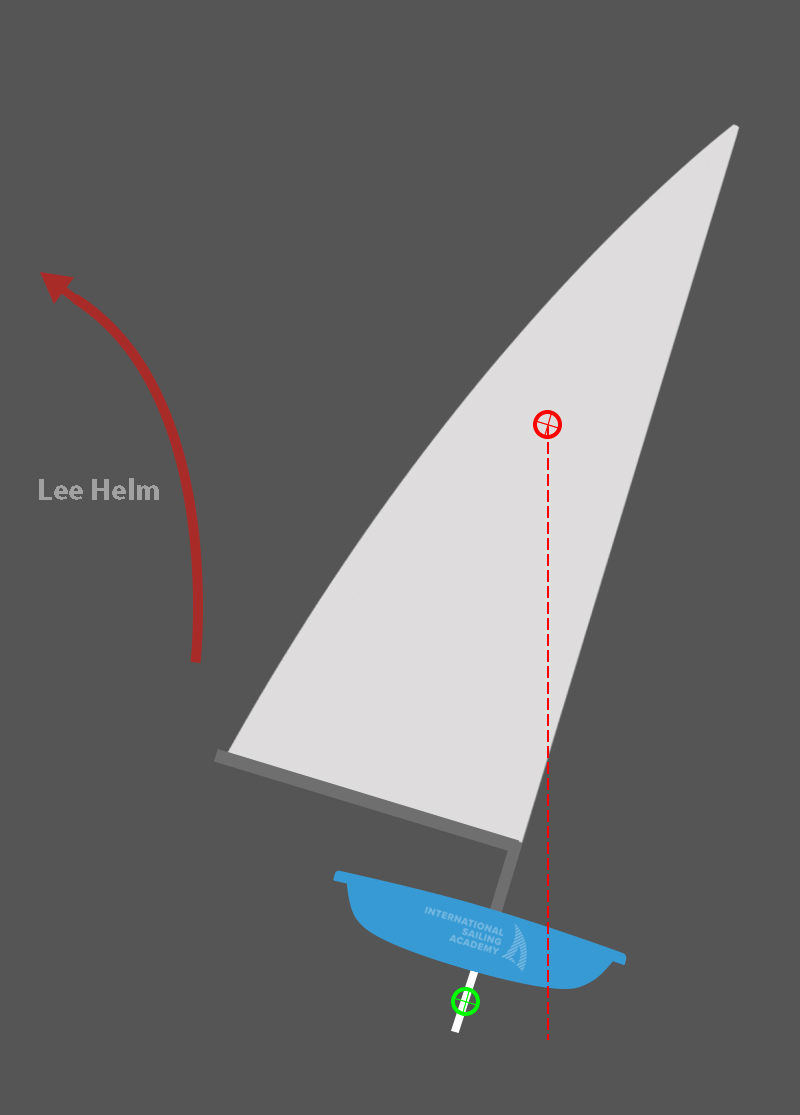
Boat is heeled to windward more than when forces are aligned, and CE is to windward/starboard of CLR: this offset force causes lee helm, boat bears away
Sheet tension can indirectly affect this turning force described above by dumping or creating power, which will initiate heel and result in the affect described above. This is oftentimes desirable - the change of sheet tension combined with resultant heel will turn the boat - they work and should work together. Adding even more active heel with your body in combination with a sheet drop will further enhance the effect.
Sheet tension can also directly affect the turn of the boat, even without heel changes, as viewed through the forces of CE and CLR from above. This is particularly intuitive on broad reach and DDW angles and more pronounced on hotter angles/windier conditions.
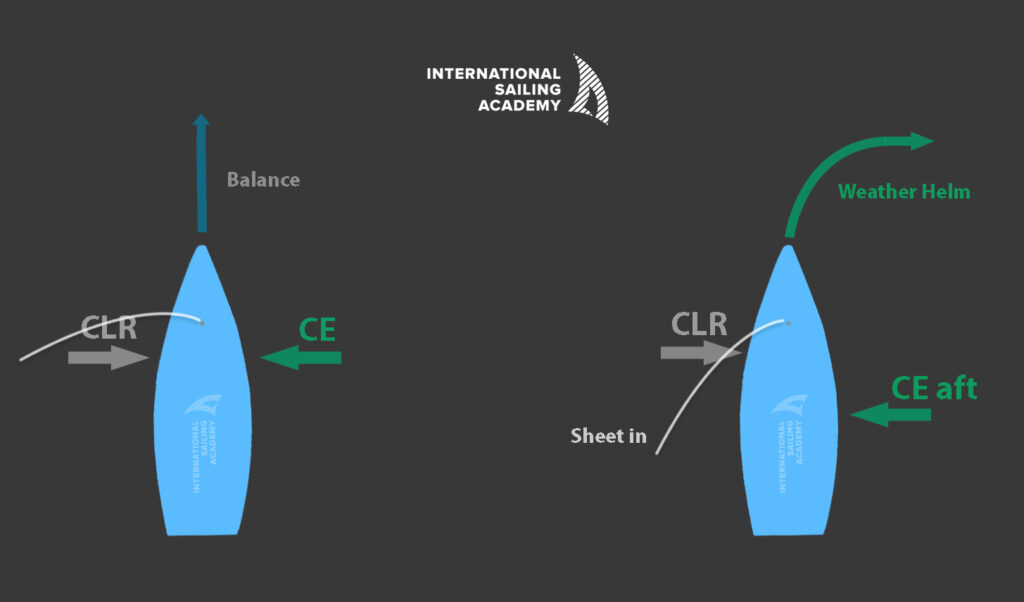
Sheeting in from a broad reach angle or DDW causes weather helm as CE moves aft
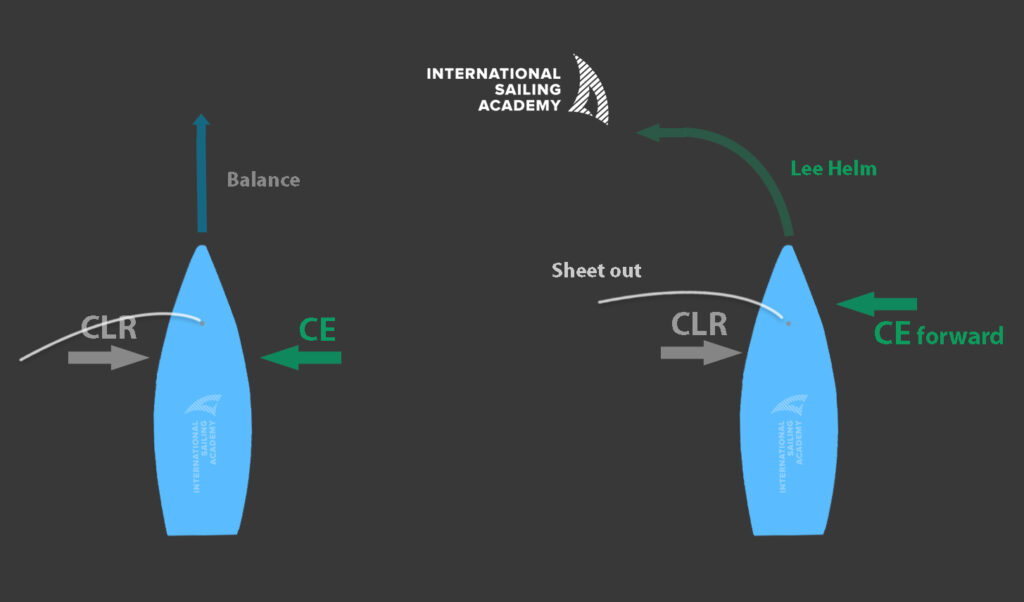
CLR can also be moved dramatically with body weight adjustments fore and aft. To move CLR back, we can move our shoulders back and down towards the rudder (not outboard!). This cancels out weather helm and/or initiates lee helm. You can use this technique while tillerless sailing as well to get the idea of it’s effect.
CLR can also be moved dramatically with body weight adjustments fore and aft. To move CLR back, we can move our shoulders back and down towards the rudder (not outboard!). This cancels out weather helm and/or initiates lee helm. You can use this technique while tillerless sailing as well to get the idea of its effect.
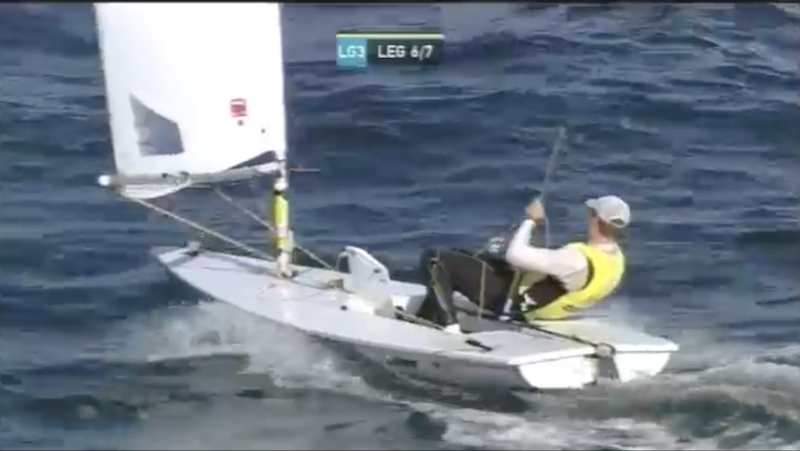
Shoulders AFT (not outboard) moves CLR aft reducing weather helm, freeing the bow and potentially initiates lee helm.
Once you’re by the lee, we have a reversal of flow and thus force direction. Most of the time by the lee, particularly at deeper angles your sheet tension affects heel. And since lateral forces are dominant here, this heel affects your directionality the most. For example, drop sheet deep (narrow/close to DDW) by the lee and this allows the boat to heel more - now lateral forces twist the boat away more BTL to your new angle.
One interesting phenomenon is that when sailing hotter by the lee, sheeting out can actually cause heading up. This is explained in the diagram below. Because of the reversed forces on sail/blades, more side loading, and the leech so far forward, it tends to push the bow back towards DDW.
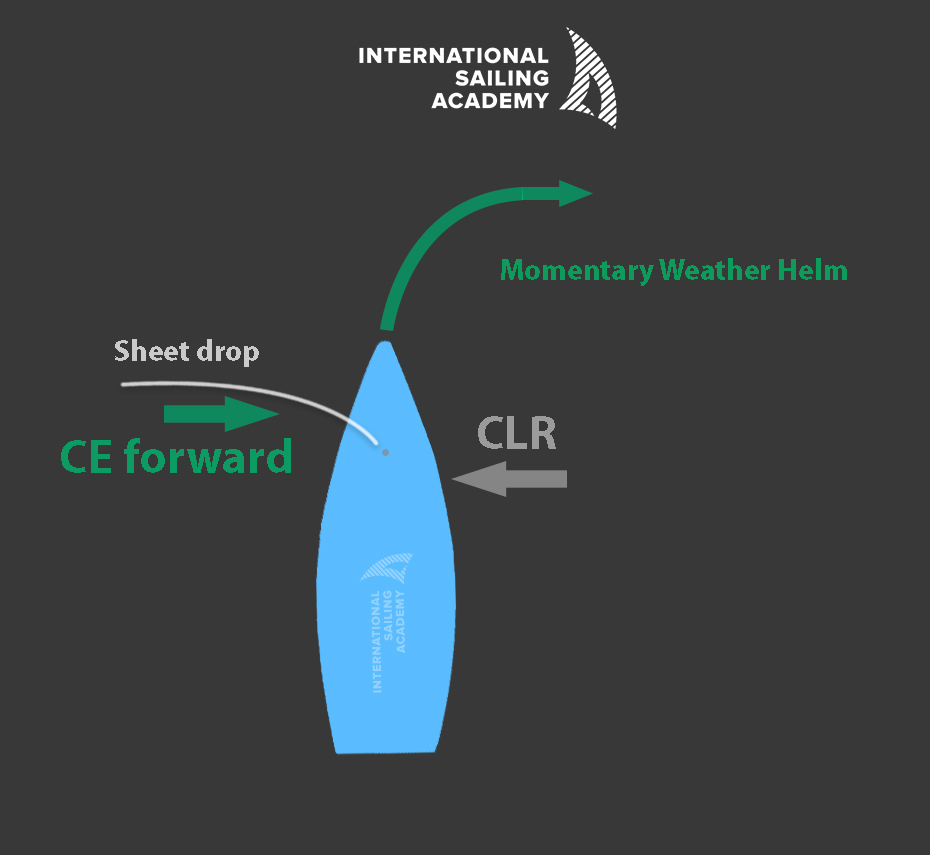
You may find that a sheet drop while by the lee tends to cause a bit of momentary weather helm. This is explained in the diagram above. CE is now traveling leech to luff, and as it moves forward, pushes the bow to windward (towards DDW).
Sometimes while tillerless sailing, the boat will have a tendency to get moving up too fast and you’ll get stuck on a beam reach. Anticipate more. Start movements and sheeting earlier than you think. Be gentle with your press/initiation. Moving your upper body AFT towards the rudder, will move your CLR back and help cancel out weather helm. Do it early.
If you’ve done that and keep spinning out to beam reach, be cognisant of driving too high with your sheet out TOO FAR. This is paradoxical because the mindset is typically to ease the sail in order to bear away. However, if the sail is luffing at the leading edge, this is now an extreme case - the CE has moved back and become more leech dominant - and the boat won’t bear away again until you TRIM IN with a bit of windward heel.
Theoretical understanding how boat forces work will compliment downwind technique and help solve many issues. Refinement of tillerless techniques will give you a better kinesthetic feel of the forces and how to manipulate them. Do a few minutes of tillerless work each light wind session. It will translate into less and more efficient rudder use, better body movements and more accurate sheeting - and will definitely improve your downwind speed over time.
For more downwind technique, tricks, and tips, personalized coaching with video review, technical briefs and debriefs, warm water, delicious and nutritious food, new lasers, carbon top sections, drone footage, high resolution media packages, boat rigging and de-rigging services and more, join in on our Laser Clinics in Mexico this winter. See you on the water.